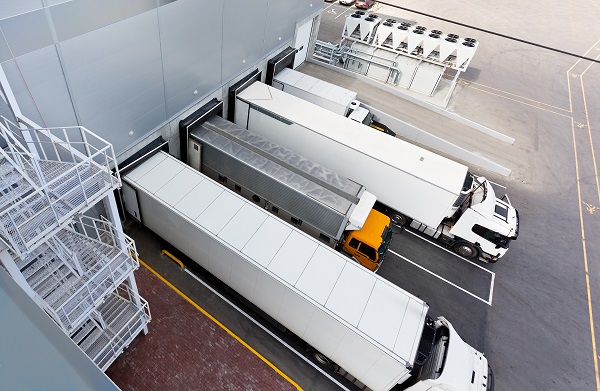
Loading Dock Safety in 5 Easy Steps
For manufacturing plants, warehouses and distribution centers, loading docks are the center of the action – the hub for receiving and unloading freight. Loading docks can be exterior or fully enclosed in a receiving bay, and are typically located near a storage room or staging area. They can also be one of the more dangerous areas. Loading and unloading semi-trailers is arduous and fast-paced, and typically involves a forklift or other material handling equipment. Establishing clear loading dock safety procedures can help reduce the likelihood of an employee getting hurt on the job.
Here are five loading dock safety tips to help keep employees safe:
1. Provide proper forklift training.
Powered industrial trucks, such as forklifts or lift trucks, cause more than 100,000 injuries every year. The Occupational Safety and Health Administration (OSHA) mandates that only trained and competent drivers may operate powered industrial trucks. OSHA also requires business owners to provide training specific to the vehicle being used, and for operators to demonstrate competency in lift operation. Refresher courses must be held every three years, or if an operator demonstrates unsafe handling. There are many private companies that provide online training courses in forklift safety. Employees may also be able to take a forklift safety class at a local community college or trade school.
2. Load and unload safely.
Workers should be trained in loading dock safety procedures specific to the type of freight a business ships or receives. For any cargo, the appropriate lift truck or hand cart should be used to avoid muscle strain. Employees should never attempt to lift skids or pallets alone. When lifting cargo, workers should bend at their knees and lift with their legs – not their backs. Special caution should also be exercised when handling flammable or combustible materials. For more information on proper loading and unloading techniques, see OSHA‘s comprehensive pocket guide to warehouse worker safety.
3. Keep the dock clean, dry and in good repair.
According to the Bureau of Labor and Statistics (BLS), slips, trips and falls account for more than 25 percent of all workplace accidents each year, and are among the most common cause of on-the-job injury. Regularly inspect loading docks and repair any noticeable damage, like worn bumpers, potholes or uneven levelers. Sweep or mop up spilled debris and liquids immediately, and put kitty-litter on spills that are oily or greasy. Place signs or cones near spills to warn workers.
4. Use wheel chocks.
Wheel chocks are wedges of heavy-duty material that fit next to a truck’s tires to help prevent trailer movement during freight transfer. They are an important safety precaution and OSHA enforces wheel chock requirements on all trailers and trucks that are not classified as commercial motor vehicles (like semis and buses). While most truck drivers carry their own chocks, it’s a good idea to have a set on-hand at the dock.
5. Wear proper safety gear.
Dock workers should wear high-visibility safety vests, gloves, and eye and ear protection. Make sure workers wear sturdy, closed-toe, anti-skid footwear. Safety helmets also should be required when employees lift freight to high shelves.
Loading dock safety procedures can help reduce the potential for workplace accidents. Following these five tips makes loading docks safer for everyone, and can reduce the likelihood of an employee injury.
